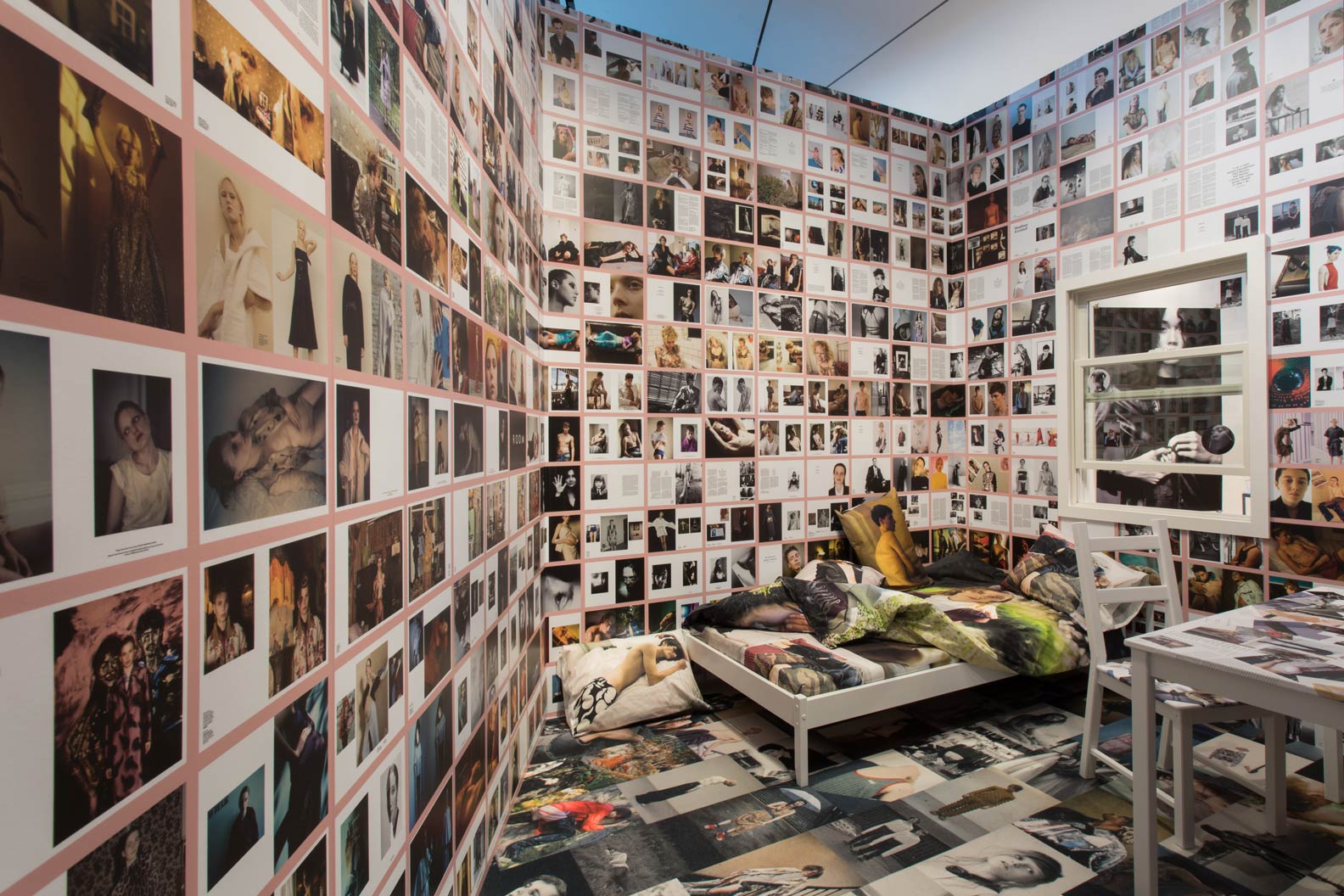Now open at the Museum of Arts and Design (MAD) in New York is “fashion after Fashion,” an exhibition that features new work by six forward-thinking designer teams, each distinguished by a unique and unfettered commitment to exploring—and expanding—the landscape of contemporary fashion design.
Arriving just days ahead of the highly-anticipated retrospective of designer Rei Kawakubo at The Metropolitan Museum of Art, MAD’s “lowercase f” fashion exhibit proceeds with a distinct perspective and truly unconventional format. First, and quite noticeably, there is not a single mannequin or physical garment to be found inside the museum space. Instead, site-specific installations like Ryohei Kawanishi’s simulation of a wholesale showroom or Henrik Vibskov’s sheer dressing cube “Harmonic Mouth” propose a reconceptualization and expanded definition of fashion that includes both public and private environments, as well as the notion that fashion is constituted by interpersonal exchange and a desire to communicate.
Tuomas Laitinen and Chris Vidal Tenomaa, of “SSAW,” draw upon childhood memories growing up with fashion publications in order to create a bedroom that is fully-wallpapered and upholstered with magazine spreads. Their teenage fantasy bedroom reminds the viewer of the aspirational power of fashion-related imagery and the importance of curating a space that is not just livable, but conducive to dreaming and creating, too.
With “INSIDE,” Helsinki-based design collective ensæmble creates a sculptural installation that exposes, literally, the undersides of everyday attire. By cutting apart various articles of clothing—a pair of jeans or a sweater, for example—and adhering each strip of fabric to a plaster mold, ensæmble transforms the unseen and often overlooked layers of fashion design into monumental, fossil-like structures.

ensæmble, “INSIDE,” detail of installation, 2017. Photo by Sanna Lehto.
Designer and 2015 Parson’s graduate Lucy Jones presents a collection of 22 elbow sleeves from her thesis “Seated Design,” a line of clothing tailored to meet the needs of individuals who use wheelchair. The installation serves as an entry point into a discussion of fashion’s exclusive infrastructure as well as the need for design that takes alternative body types, positionings, and limitations into consideration from the outset.
Also on view is a short film by Mike Eckhaus and Zoe Latta of NYC-based label Eckhaus Latta and director Alexa Karolinski. Shot in a bathroom interior, “Coco” sees a diverse cast of characters including Document contributor Juliana Huxtable wearing the label’s Fall/Winter 2017 collection and answering questions from a deck of cards. The film encapsulates the ethos of the MAD show by responding to the many (often negative) associations that “Fashion” with a capital F calls to mind: a product-driven and ultimately consumer-dependent industry; prescriptive, rigid, and unattainable standards of beauty; the widespread and seemingly unchecked power of elite tastemakers; and an industry profoundly indifferent towards its long-term impact on socio-cultural, ethical-political, or environmental issues.

ensæmble, “INSIDE,” detail of installation, 2017. Photo by Sanna Lehto.
Ultimately, the works included in the exhibition serve a greater purpose: not to ridicule, but to challenge the public to think deeply about established norms in the fashion industry as well as the limitless potential of design to address and affect change in our world.
The Museum of Arts and Design’s “fashion after Fashion” is open to the public from April 27 through August 6, 2017.
















